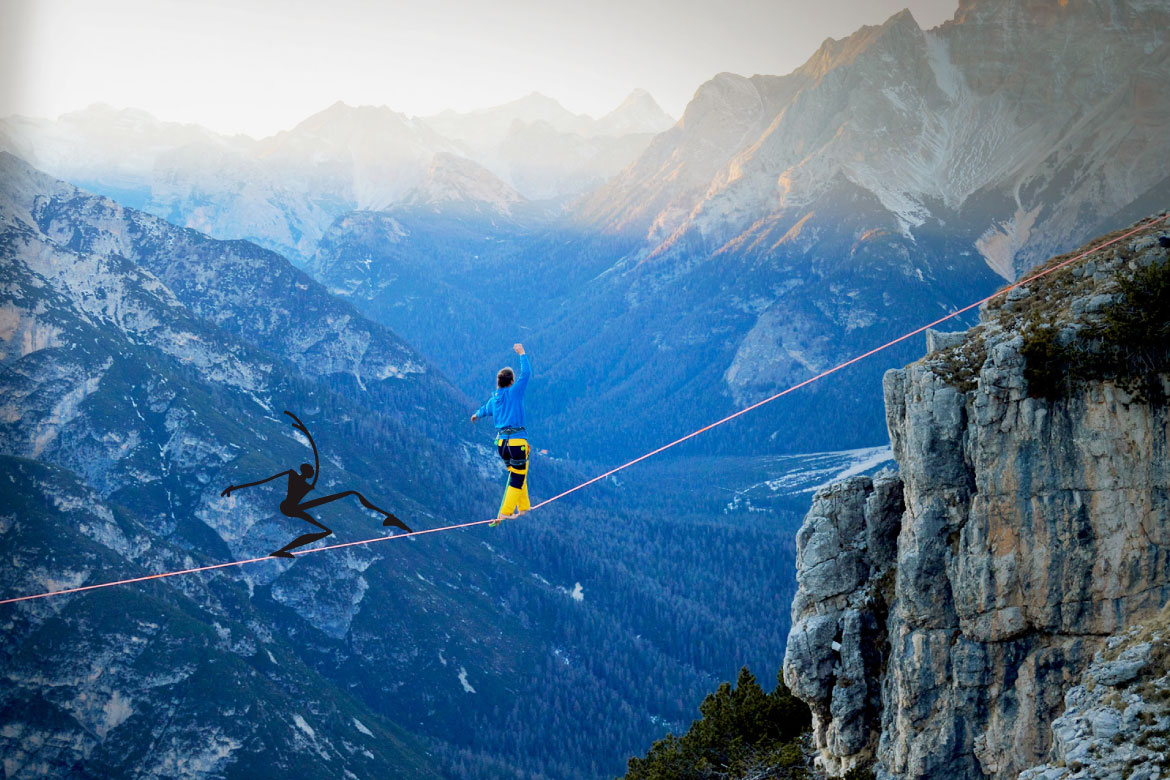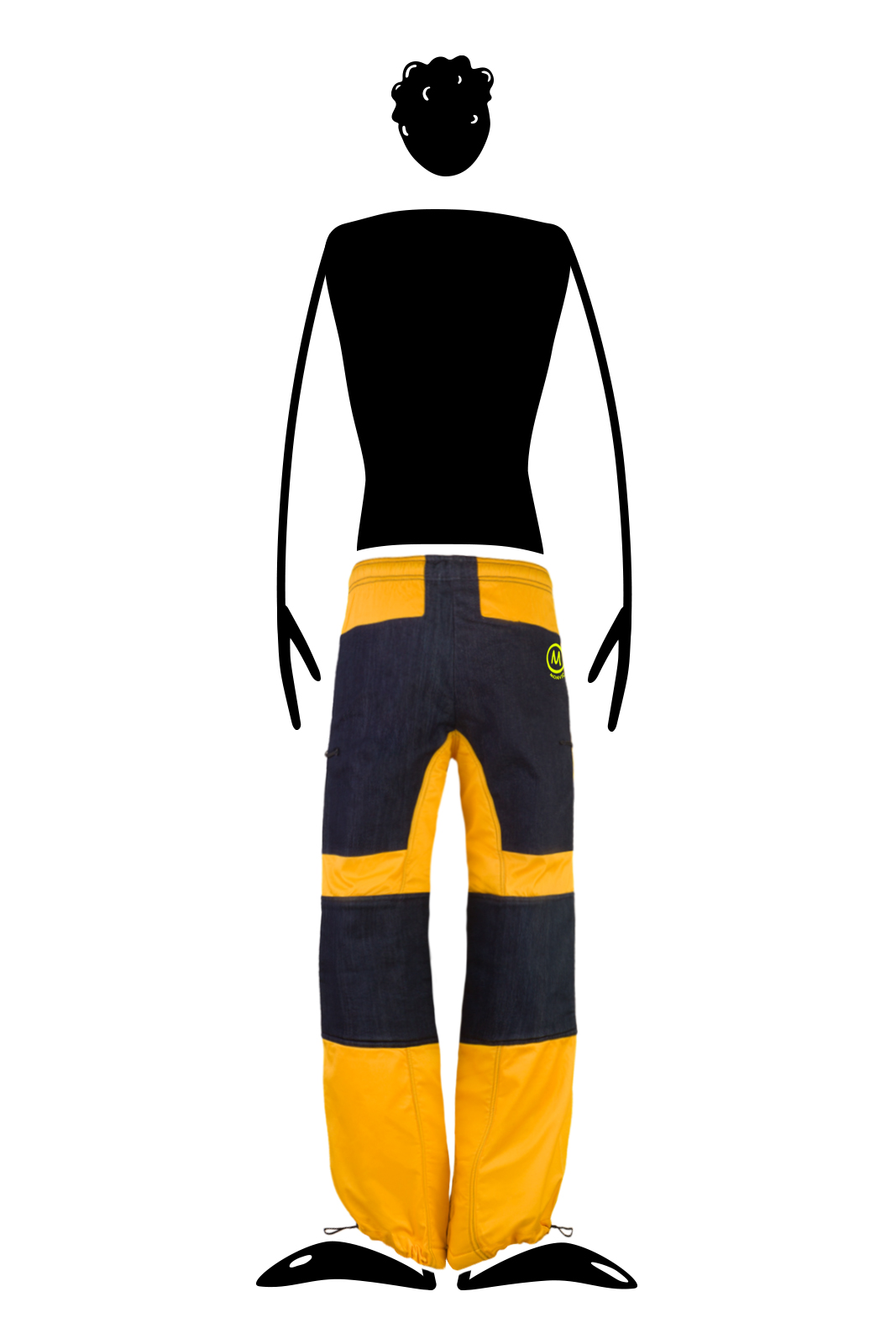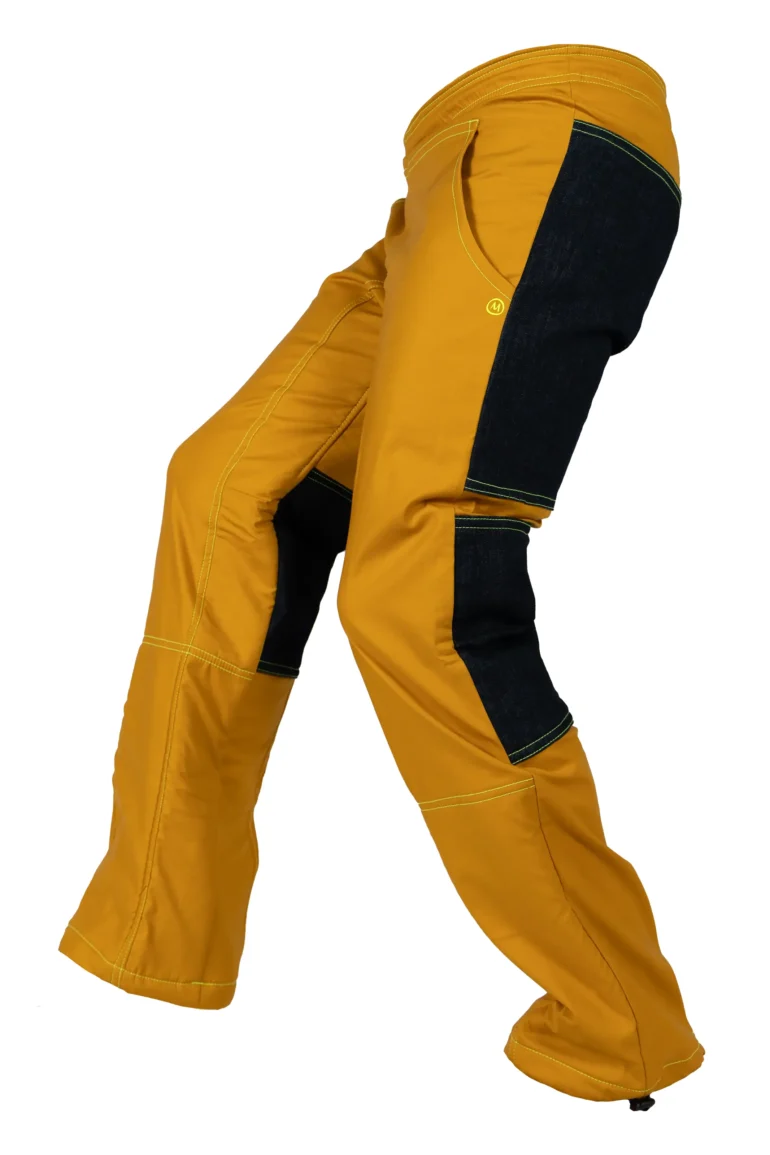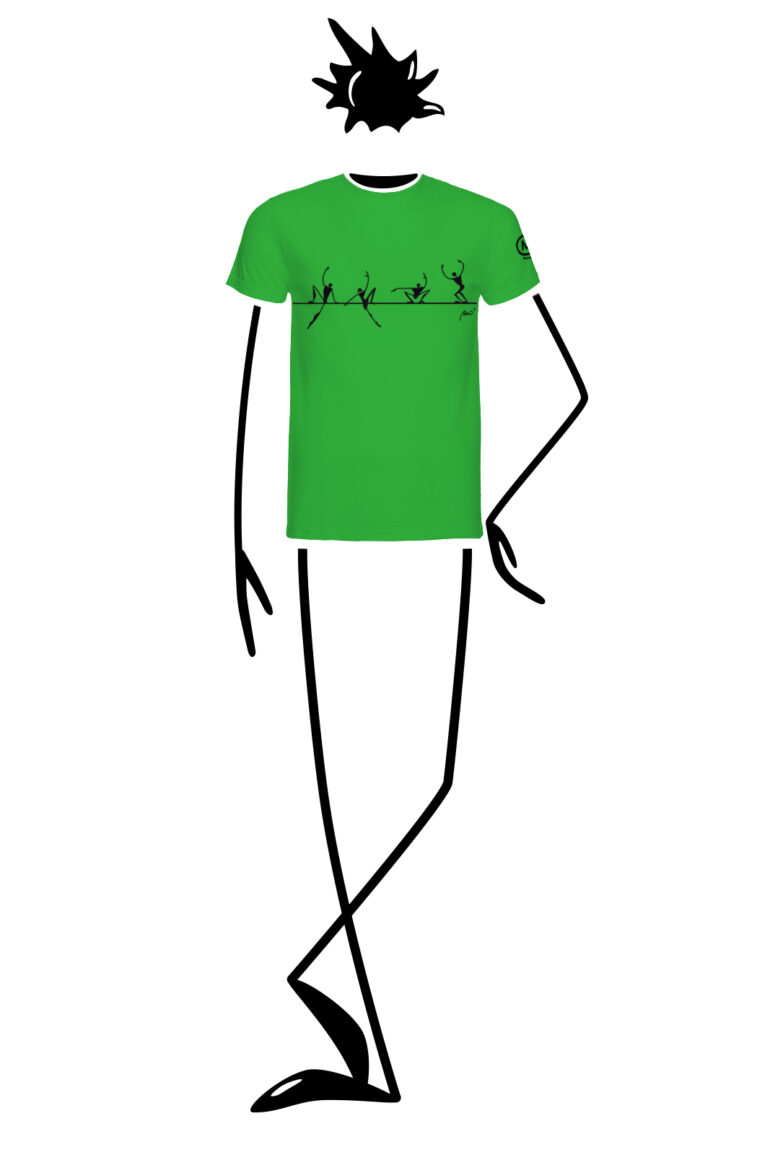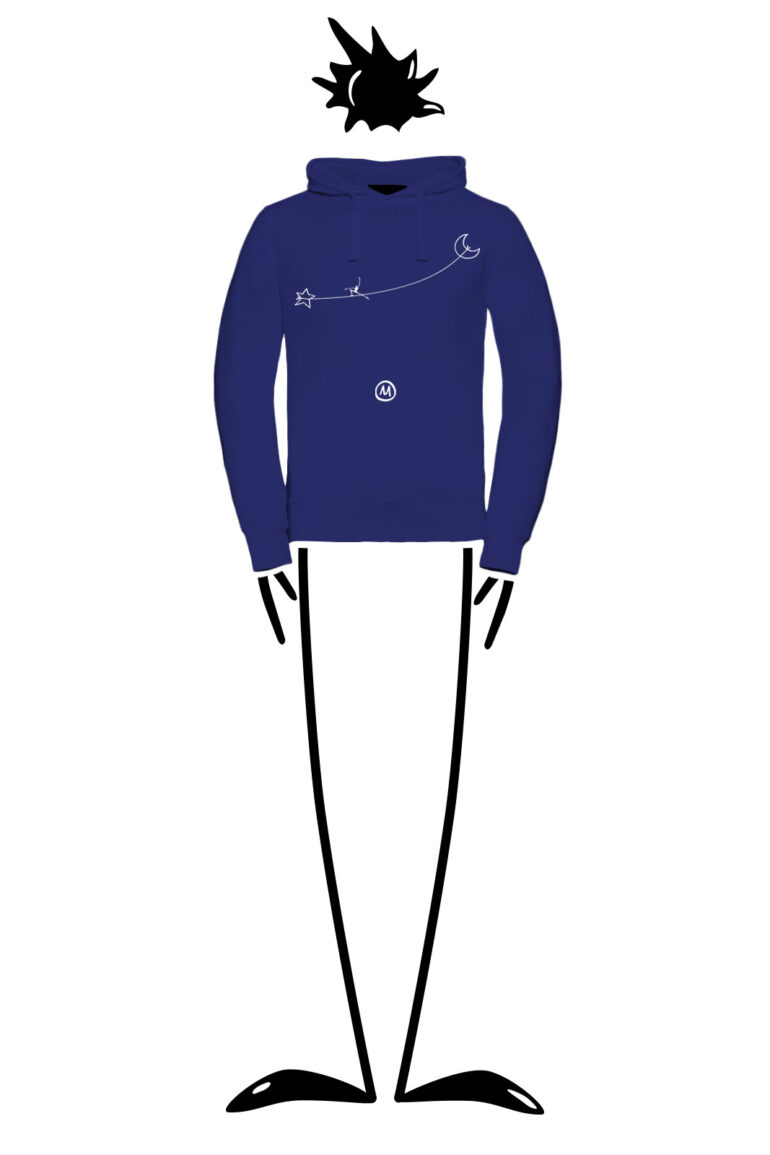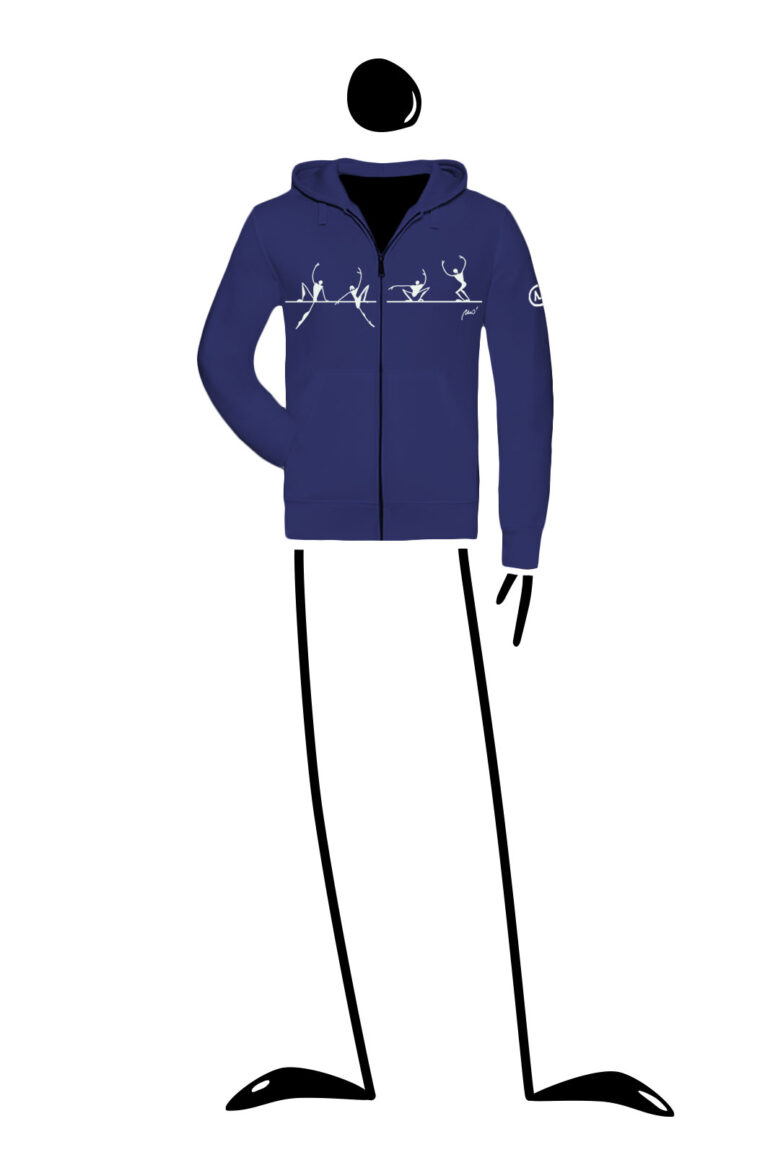What is slacklining?
It is a passion halfway between meditation and tightrope walking for some, an expression of a free lifestyle for others, to be enjoyed in the open air and full of moments of sharing. More and more often we meet climbers who have taken up this adventure sport and we have wondered why.
Looking for the roots of slacklining, we discovered that it originated in the 1980s in California, among climbers in the Yosemite National Park. Primarily, climbers began walking on elastic webbing as an introductory training for sport climbing, to improve balance and train concentration.
Over time, slackline was practiced outside the climbing circle as well, with athletes devoting themselves exclusively to and with great passion for this new outdoor discipline. Following this claim as a sporting activity in its own right, slacklining has branched out into three exciting sub-disciplines.


- TRICKLINE: with a 5 cm-wide webbing, between 10 and 25 metres long, tied to two trees, evolutions of varying difficulty are attempted, with the aim of landing and remaining balanced on the line. There are numerous freestyle competitions for this practice, where you can see crazy evolutions.
- LONGLINE: dit is different from trickline, as the term suggests, and it aims at maintaining balance over a path and therefore walking a much longer line.
- HIGHLINE: in our opinion, perhaps the most spectacular discipline, both for the test of courage of those who practice it and for the scenery it takes place in. It is an activity which requires technique but, above all, a clear head that will keep you focused and balanced, while walking on a webbing secured to two ends of a rock, the void underneath you. The line is rigged by experts only. The practitioner wears the same harness as in climbing and secures himself with a specific knot.
In short, if it’s easy to take up slacklining by tying the line to two trees in the park, highlining is a much more serious affair.
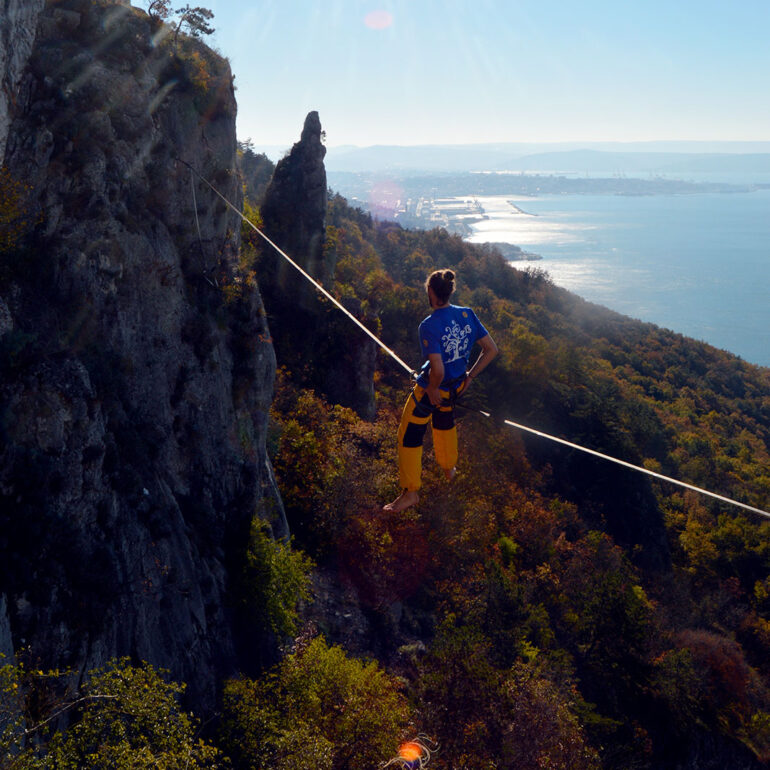

Slacklining in Italy
While wandering around the world of highlining, we were struck by the moments of sharing and by the community of those who practice it, young people from different parts of Europe who meet up to set up lines in spectacular places, from the cliffs overlooking the sea in Liguria to the mountains in the Aosta Valley in the municipality of Bionaz, from Monte Piana in the Dolomites to the crags in the north of Sardinia.
Increasingly attracted by the world of slack and in order to find out more about this discipline, which has already become part of our technical clothing collections, we are pleased to bring you an extract from an interview with our friend and mountain guide Marco Milanese.
When did you start practicing slack and why?
I started about 13 years ago in Val di Mello, I was bouldering and between one boulder and another my attention was drawn to a group of Austrian guys practicing slacklining in the valley. It was love at first sight. Initially slacklining was a round-off to my climbing days, partly to improve my balance and partly as a game. Then, as the discipline grew and its various types were born, I devoted entire days to it, aside from climbing.
Practicing it, have you found any related benefits to the other disciplines you practice?
Absolutely, in particular it has been very useful as a mental training to increase my ability to concentrate; this is especially true with highlining. It also helps me to better focus my movements in all the other sports I practice. I also believe that you can gain physical benefit thanks to the correct posture that walking on the line imposes on you and all those micro movements that allow your muscles and your joints to stay trained.
As an Alpine Guide, have clients ever asked you to try highlining?
Not as a mountain guide. In Italy it’s a fairly young sport and still far from being popular. Let’s say that if a potential client had already tried slacklining and were able to maintain a good balance, I would have no problem letting him try the highline experience. I would require a minimum of previous slackline practice for them to fully enjoy the experience.
Can you give advice for those who want to start?
Slacklining is a sport that you can also start on your own. The first steps can be taken by following simple tutorials on YouTube, that show you how to assemble and disassemble the slackline or show the first simple exercises. In a park with a line fixed between two trees, keep on trying set the correct your posture and listen to your body’s balance.
Social media are the best place to get in touch with several groups and associations you can become a member of.
How much does it cost?
It is a cheap sport, as slacklines are inexpensive. requiring from 30 to 100 euros at the most. Highlining is quite different as it is more expensive and more complicated. Obviously, as in climbing, you can initially share the cost with a group of friends.
What skills does a person need to be able to Slackline? What about highline specifically?
In a word: none. I associate this activity with juggling, so anyone can learn. Motivation and determination make the difference, more than technical skills. We can all walk on a suspended webbing; we just need to train, especially at the beginning, and be consistent. I believe it would take a fortnight to see positive results, if you train really hard.
We know that you use our CLOUDS slackline trousers, which we developed and improved thanks to your feedback. Do you think they are useful for this sport?
Yes, the CLOUDS slackline pants are made with very durable garments, they are great for beginners and trickline riders. They feature padding in the right places, so they are especially great at the beginning, when you have to learn how to fall, thus protecting your groin from unpleasant bruises. They also work wonders for trickline. where you often impact with the webbing and the patches and reinforcements in these trousers will prevent abrasions. I also use them and recommend them for slacklining or highline activities in the winter.
Marco Milanese
www.marcomilanese.com


